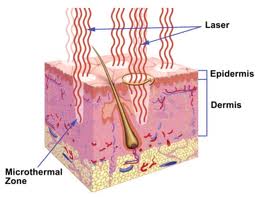Early treatment of scars by some method is certainly preferred by patients whether the scars are from traumatic injury or elective aesthetic surgery. A variety of such scar strategies exist from topical gels and tapes to pulsed dye and ablative laser treatments. All of these methods have shown long-term scar appearance benefit with topical treatments being the most economical. But whether similar benefits are seen with fractional laser resurfacing has not been similarly studied.

In the January 2015 issue of Lasers in Medicine and Surgery journal, a study was published entitled ‘Early Postoperative Single Treatment Ablative Fractional Lasing of Mohs Micrographic Surgery Facial Scars: A Split-Scar, Evaluator-Blinded Study’. In this study, a prospective randomized split scar study was done on twenty (20) patients between the ages of 20 to 90 years old. The scars created were from Mohs surgery for facial skin cancers. Studied scars had a linear length of 4 cms or more. On the day of suture removal half of the scar was treated with a fractional laser. (spot 7mm, 10% density at 10mJ) The other half of the scar was left untreated to serve as a control. Three months laters the scars were evaluated and graded by both the patients and an independent observer. While all portions of the scars improved with healing time, the laser treated scar halfs were seen to be improved by patient assessments but not so much by independent assessment. No adverse effects of the laser treatments were seen.
The fractional laser settings used in this study were very conservative. Improved scar appearances would likely be obtained by more aggressive settings, particularly if a single laser treatment was going to be used. While the optimal laser settings for prophylactic scar treatment are unknown, I prefer to use a density of 22% at 50 mJ as a single pass to help the scars get better faster.
Dr. Barry Eppley
Indianapolis, Indiana


